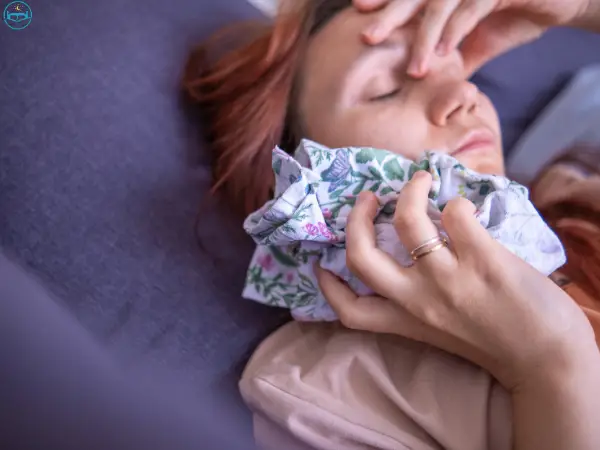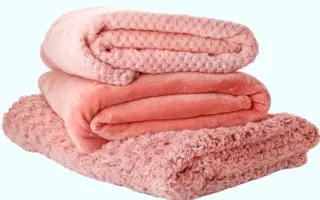You can generally sleep on your side after 48-72 hours post-tooth extraction. Always follow your dentist’s specific advice.
Tooth extraction can be a daunting experience, especially when it comes to post-operative care. One crucial aspect is how to sleep comfortably and safely during recovery. Many patients wonder when it’s safe to sleep on their side without risking complications.
While most people can resume side sleeping 48-72 hours after extraction, individual recovery times may vary. It’s essential to follow your dentist’s instructions and keep your head elevated to reduce swelling. Proper sleep positioning aids in faster recovery and minimizes the chances of disrupting the healing process. By adhering to these guidelines, you can ensure a smoother and more comfortable recovery period.
Table of Contents
Why Side Sleeping Is Important After Tooth Extraction
Side sleeping after a tooth extraction can significantly impact the healing process. Proper positioning minimizes discomfort and promotes faster healing. Ensuring you sleep correctly is vital for a stress-free recovery.
Reducing Swelling And Pain
Swelling and pain are common after tooth extraction. Sleeping on your side can help reduce these symptoms. Elevate your head with pillows. This position allows blood flow to decrease in the affected area, minimizing swelling and pain.
Preventing Dry Socket
A dry socket is a painful condition that can occur after tooth extraction. It happens when the blood clot at the extraction site dislodges. Sleeping on your side can help maintain the blood clot and reduce the risk of dry socket. Avoid sleeping on the extraction side to prevent pressure on the area.
Improving Breathing
Proper breathing is essential for overall health, especially after surgery. Side sleeping can improve your airway and breathing. This position reduces the chances of snoring and sleep apnea, promoting better oxygen flow.
Enhancing Comfort
Comfort is key during recovery. Sleeping on your side, with the head elevated, can enhance comfort. Use a soft pillow to support your neck and head. This position helps you rest better and recover faster.
| Benefits | Description |
|---|---|
| Reduce Swelling | Elevating the head helps decrease blood flow to the extraction site, reducing swelling. |
| Prevent Dry Socket | Side sleeping helps maintain the blood clot, reducing the risk of dry socket. |
| Improve Breathing | Side sleeping can enhance airway and breathing, reducing snoring and sleep apnea. |
| Enhance Comfort | Proper positioning with pillows can make you feel more comfortable and aid recovery. |
Remember, sleeping on your side can aid your recovery after a tooth extraction. Follow these expert tips for a smoother healing process.

Sleeping On Your Side After Tooth Extraction
After a tooth extraction, finding the right sleeping position can be challenging. Many people wonder, “When can I sleep on my side after tooth extraction?”
Benefits Of Sleeping On Your Side
Sleeping on your side can offer several advantages, especially after a tooth extraction. Here are some key benefits:
- Reduced Swelling: Elevating your head while sleeping on your side can help reduce swelling and inflammation.
- Improved Drainage: This position allows for better drainage of fluids from the extraction site, preventing infections.
- Comfort: Many find side sleeping more comfortable, promoting better rest during recovery.
- Breathing: Side sleeping can improve breathing, reducing the risk of sleep apnea and snoring.
These benefits highlight the importance of choosing the right sleeping position post-extraction. Prioritize comfort and health by understanding the advantages of side sleeping.
How To Sleep On Your Side Comfortably
Ensuring comfort while sleeping on your side after tooth extraction involves a few simple steps:
- Use a Firm Pillow: A firm pillow supports your head and neck, maintaining proper alignment.
- Elevate Your Head: Elevate your head slightly to reduce swelling. Use an extra pillow if necessary.
- Avoid Pressure on the Extraction Site: Place a soft cloth or additional padding on the side where the extraction occurred to avoid direct pressure.
- Support Your Body: Use a body pillow or place pillows between your knees for added support and comfort.
- Maintain a Clean Environment: Keep your sleeping area clean to prevent infections. Change pillowcases regularly.
Following these tips ensures a more comfortable and restful sleep while promoting faster healing after your tooth extraction.
Pillows That Can Help You Sleep On Your Side
Choosing the right pillow enhances comfort and supports proper alignment while sleeping on your side. Here are some recommended pillows:
| Pillow Type | Benefits |
|---|---|
| Memory Foam Pillow | Conforms to your head and neck, providing customized support. |
| Wedge Pillow | Elevates your upper body, reducing swelling and improving drainage. |
| Body Pillow | Offers full-body support, aligning your spine and reducing pressure on the extraction site. |
| Contour Pillow | Designed to maintain the natural curve of your neck and spine, enhancing comfort. |
These pillows provide various benefits, ensuring a comfortable and healthy side-sleeping experience post-extraction. Choose the one that best fits your needs for optimal recovery.
When Can You Sleep On Your Side After Tooth Extraction?
After a tooth extraction, knowing when you can sleep on your side is essential for a smooth recovery. Proper sleeping positions help minimize discomfort and prevent complications.
Healing Time After Tooth Extraction
The healing time after a tooth extraction varies from person to person. On average, it takes about 1 to 2 weeks for the initial healing phase. During this period, the blood clot forms and the gum tissue begins to heal. Here are some key points to consider:
- First 24 hours: A blood clot forms to protect the extraction site. Avoid disturbing the clot.
- 2-3 days: Swelling and discomfort are common. Use ice packs and prescribed medications to manage pain.
- 1 week: The gum tissue starts to heal. Follow your dentist’s instructions to prevent infection.
- 2 weeks: The extraction site continues to heal, and most people can resume normal activities.
It’s crucial to follow your dentist’s aftercare instructions to promote faster healing. Avoid strenuous activities and stick to a soft food diet during the initial days.
When It’s Safe To Sleep On Your Side
Sleeping on your side too soon after a tooth extraction can disrupt the healing process. The blood clot protecting the extraction site is delicate and can dislodge easily. Experts recommend the following guidelines:
- First 24-48 hours: Sleep with your head elevated using pillows. This helps reduce swelling and keeps the blood clot intact.
- After 48 hours: If you experience minimal swelling and pain, you can start sleeping on your side. Use a soft pillow to support your head and neck.
- 1 week: By this time, the healing process is more stable. You can sleep on your side comfortably but avoid putting pressure on the extraction site.
Always listen to your body. If you feel any discomfort or notice increased swelling, revert to sleeping with your head elevated and consult your dentist.
Factors That Affect When You Can Sleep On Your Side
Several factors can influence when you can safely sleep on your side after a tooth extraction:
- Type of extraction: Simple extractions heal faster compared to surgical extractions, which might need more recovery time.
- Number of teeth extracted: Multiple extractions may require a longer healing period.
- Age and health: Younger individuals and those in good health typically heal faster.
- Smoking and alcohol: Avoid smoking and alcohol as they can delay healing.
- Aftercare routine: Following your dentist’s aftercare instructions diligently promotes faster healing.
It’s essential to communicate with your dentist about your progress. They can provide personalized advice based on your specific situation.

Tips For Sleeping After Tooth Extraction
After a tooth extraction, sleeping comfortably can be a challenge. Following these tips can help ease discomfort and promote healing.
Elevating Your Head While Sleeping
Elevating your head while sleeping can significantly reduce swelling and bleeding. Keeping your head higher than your heart helps to minimize blood flow to the extraction site, reducing the risk of complications.
Here are some ways to elevate your head:
- Use extra pillows to prop yourself up.
- Consider a wedge pillow for better support.
- Sleep in a recliner if you find it more comfortable.
Table showing the benefits of elevating your head:
| Benefit | Description |
|---|---|
| Reduces Swelling | Helps decrease fluid buildup in the face and mouth. |
| Minimizes Bleeding | Lessens blood flow to the extraction site, reducing bleeding risks. |
| Increases Comfort | Helps you find a more comfortable sleeping position. |
Avoiding Certain Foods And Drinks Before Bed
Avoid certain foods and drinks before bed to prevent irritation and discomfort. Consuming the wrong items can increase pain and slow down the healing process.
Foods and drinks to avoid:
- Spicy foods: Can irritate the extraction site.
- Hard foods: Risk of dislodging the blood clot.
- Alcohol: Can interfere with medication and slow healing.
- Caffeinated drinks: May increase blood pressure and cause bleeding.
Instead, opt for soft foods and room temperature liquids, such as:
- Mashed potatoes
- Yogurt
- Applesauce
- Protein shakes
| Food/Drink | Reason |
|---|---|
| Mashed Potatoes | Soft and easy to consume. |
| Yogurt | Gentle on the extraction site. |
| Applesauce | Non-irritating and nutritious. |
| Protein Shakes | Provides necessary nutrients without chewing. |
Using Ice Packs To Reduce Pain And Swelling
Applying ice packs can be highly effective in reducing pain and swelling after a tooth extraction. Ice helps numb the area and constricts blood vessels, reducing inflammation.
Steps to use ice packs effectively:
- Wrap the ice pack in a cloth to avoid direct contact with the skin.
- Apply the ice pack to the cheek near the extraction site for 20 minutes.
- Remove the ice pack for 20 minutes and then reapply.
- Repeat this process for the first 48 hours post-extraction.
- Decreases swelling and inflammation.
- Reduces pain and discomfort.
- Helps numb the affected area.
| Benefit | Description |
|---|---|
| Reduces Swelling | Minimizes fluid buildup and inflammation. |
| Decreases Pain | Numbs the area to relieve discomfort. |
| Promotes Healing | Reduces complications and speeds up recovery. |
How To Manage Pain And Discomfort
Tooth extractions can cause significant pain and discomfort, especially when trying to sleep. Knowing how to manage this pain effectively can help you rest better and recover faster. This section delves into various methods to alleviate pain and discomfort after tooth extraction.
Over-the-counter Pain Relievers
Over-the-counter pain relievers can be highly effective in managing pain after a tooth extraction. Ibuprofen and acetaminophen are two of the most common options. These medications can help reduce inflammation and relieve pain.
Here are some tips for using over-the-counter pain relievers:
- Ibuprofen (Advil, Motrin): Take 200-400 mg every 4-6 hours. Do not exceed 3200 mg in 24 hours.
- Acetaminophen (Tylenol): Take 500-1000 mg every 4-6 hours. Do not exceed 4000 mg in 24 hours.
For optimal results, you can alternate between ibuprofen and acetaminophen. This strategy can provide more consistent pain relief and reduce the risk of overuse.
Important Note: Always follow the dosage instructions on the label. Avoid alcohol while taking these medications to prevent liver damage.
Prescription Pain Medications
In some cases, over-the-counter medications may not be sufficient. Your dentist may prescribe stronger pain medications to help manage your discomfort. These medications are usually more potent and can provide substantial relief.
Common prescription pain medications include:
- Hydrocodone/acetaminophen (Vicodin): Combines a narcotic pain reliever with acetaminophen.
- Oxycodone/acetaminophen (Percocet): Another combination of a narcotic and acetaminophen.
- Codeine: Often combined with acetaminophen or aspirin for added relief.
These medications should be taken as prescribed by your dentist. They can be highly effective but also come with risks, such as dependency and side effects.
Important Note: Use prescription medications only as directed. Do not share your medication with others and store it securely.
Natural Remedies For Pain Relief
Natural remedies can also be effective in managing pain and discomfort after a tooth extraction. These methods are often preferred by those looking for a more holistic approach.
Here are some natural remedies to consider:
- Ice Packs: Apply an ice pack to the affected area for 15-20 minutes every hour.
- Salt Water Rinse: Mix 1/2 teaspoon of salt in a glass of warm water. Rinse your mouth gently to reduce swelling and pain.
- Clove Oil: Known for its numbing effect, apply a small amount of clove oil to a cotton ball and place it on the extraction site.
- Herbal Teas: Chamomile and peppermint teas can have anti-inflammatory properties. Drink them warm or use them as a mouth rinse.
These remedies can offer significant relief and are often easy to implement. They can be used in conjunction with other pain management strategies for the best results.
Important Note: Always consult your dentist before trying new remedies to ensure they are safe for your specific condition.
What To Do If You Experience Complications
While recovery varies for everyone, complications can arise. Knowing what to do if you experience complications is crucial for a smooth healing process.
Signs Of Infection
Infections can delay healing after a tooth extraction. Knowing the signs of infection helps in early intervention. Here are common indicators:
- Severe pain that doesn’t subside with painkillers.
- Swelling around the extraction site.
- Redness and warmth in the affected area.
- Foul taste or odor in your mouth.
- Fever and chills.
If you notice any of these symptoms, contact your dentist immediately. Early treatment can prevent serious complications.
Dry Socket Symptoms
Dry socket is a painful condition that occurs when the blood clot at the extraction site dislodges. This exposes the underlying bone and nerves. Signs of dry socket include:
- Intense pain a few days after the extraction.
- Visible bone in the socket.
- Bad breath or foul odor.
- Unpleasant taste in your mouth.
Dry socket is more common in lower wisdom teeth extractions. To reduce the risk, avoid smoking, sucking through straws, and vigorous rinsing for the first 24 hours.
When To Contact Your Dentist
Knowing when to contact your dentist can make a significant difference in your recovery. Reach out to your dentist if you experience:
- Uncontrolled bleeding that doesn’t stop after applying pressure for 30 minutes.
- Severe pain that doesn’t improve with prescribed painkillers.
- Swelling that gets worse instead of better.
- Pus discharge from the extraction site.
- Difficulty swallowing or breathing.
These symptoms may indicate complications that require professional attention. Prompt action can prevent further issues and ensure a smoother recovery.
Frequently Asked Questions
When Can I Start Sleeping On My Side After Tooth Extraction?
You can start sleeping on your side 48-72 hours after tooth extraction. Ensure your head is elevated to reduce swelling.
How To Prevent Dry Socket While Sleeping?
To prevent dry socket while sleeping, keep your head elevated using extra pillows. Avoid sucking actions like using straws or smoking. Stick to soft foods and avoid vigorous rinsing. Follow your dentist’s post-op instructions carefully.
When Can I Eat On The Side My Tooth Was Extracted?
You can eat on the extraction side after 24-48 hours. Stick to soft foods and chew carefully. Follow your dentist’s advice for a safe recovery.
Can I Go To Sleep If My Tooth Extraction Is Still Bleeding?
Avoid sleeping if your tooth extraction is still bleeding. Elevate your head and apply gauze to control bleeding.



